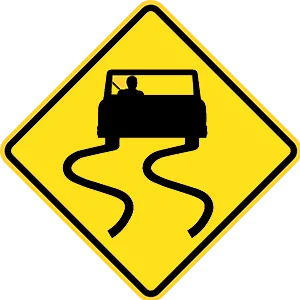FREE Kansas DMV Practice Test #18 Page 3 of 3
In Kansas, the DMV practise tests have been revised for January 2025. It includes questions based on the Kansas Driver Handbook's most essential traffic signals and regulations for 2025. Use actual questions that are very similar (often identical!) to the DMV driving permit test and driver's licence exam to study for the DMV driving permit test and driver's licence exam.
On the practise exam, each question gets a tip and explanation to help you remember the concepts. The written component of the official Kansas DMV test will include questions about traffic rules, traffic signs, and driving statutes, as well as information from the Driver Handbook.
To obtain a passing grade, you must correctly answer 20 of the 25 questions. Take our DMV practise exam to help you prepare for your Kansas instruction permit or driver's licence.
The DMV exam is available in several languages.
Using any kind of testing assistance will result in an automatic fail, and the DMV may take additional action against your driver's licence, so stay away from it.
17 . There are two traffic lanes moving in your direction. You are driving in the left lane and many vehicles are passing you on the right. If the driver behind you wishes to drive faster, you should:
To drive quickly, pass, or turn left, use the left lane. Use the right lane when driving more slowly than surrounding traffic, entering the road, or turning right.
18 . Which of the following statements about blind spots is true?
Blind spots are areas that a driver cannot see if they look in their mirrors. Large trucks have large blind spots that drivers of other vehicles should avoid.
19 . What is the only effective way to remove alcohol from the body?
The only way to remove the effects of alcohol from the body is to let time pass. Eating, drinking coffee, or taking a shower will not speed up this process.
20 . This yellow signs means:

This sign indicates that the road ahead may be slippery when wet.
21 . This sign means:

Warning signs are usually yellow with black markings. This sign alerts drivers to where pedestrians may be crossing. If a pedestrian is crossing in a crosswalk marked with this sign, drivers must stop and remain stopped until the pedestrian is no longer in the crosswalk.
22 . If you have an argument with another person and you are angry, you should:
Your emotions affect your ability to drive safely. If you are overly angry, excited, afraid, worried, or depressed, you should give yourself time to calm down before operating a vehicle. You need to be able to mentally focus on driving without thinking about the things that made you upset.
23 . This sign means you are approaching a railroad crossing that does not have a signal. You should:

At a railroad crossing marked with this sign, a driver should look both ways, listen for any trains, and be prepared to stop if any trains are nearby. Never try to outdrive an oncoming train.
24 . Which of the following driving skills is/are affected by the use of alcohol and/or drugs?
Alcohol and other drugs can negatively effect a number of skills needed for safe driving, including a driver's reaction time, coordination, alertness, and ability to concentrate.
25 . This sign means:

This sign warns of a dangerous downgrade or hill ahead. The hill may be very long or steep, or it may have sharp curves.
See the exact questions that will be on the 2025 Kansas DMV exam.
99.2% of people who use the cheat sheet pass the FIRST TIME
LT gives us an insight on how the cheat sheet provided her with all the study questions she needed before taking her test.
Joe initially studied with the handbook and failed his test, he eventually found us online, studied and pass his test the first time around.



